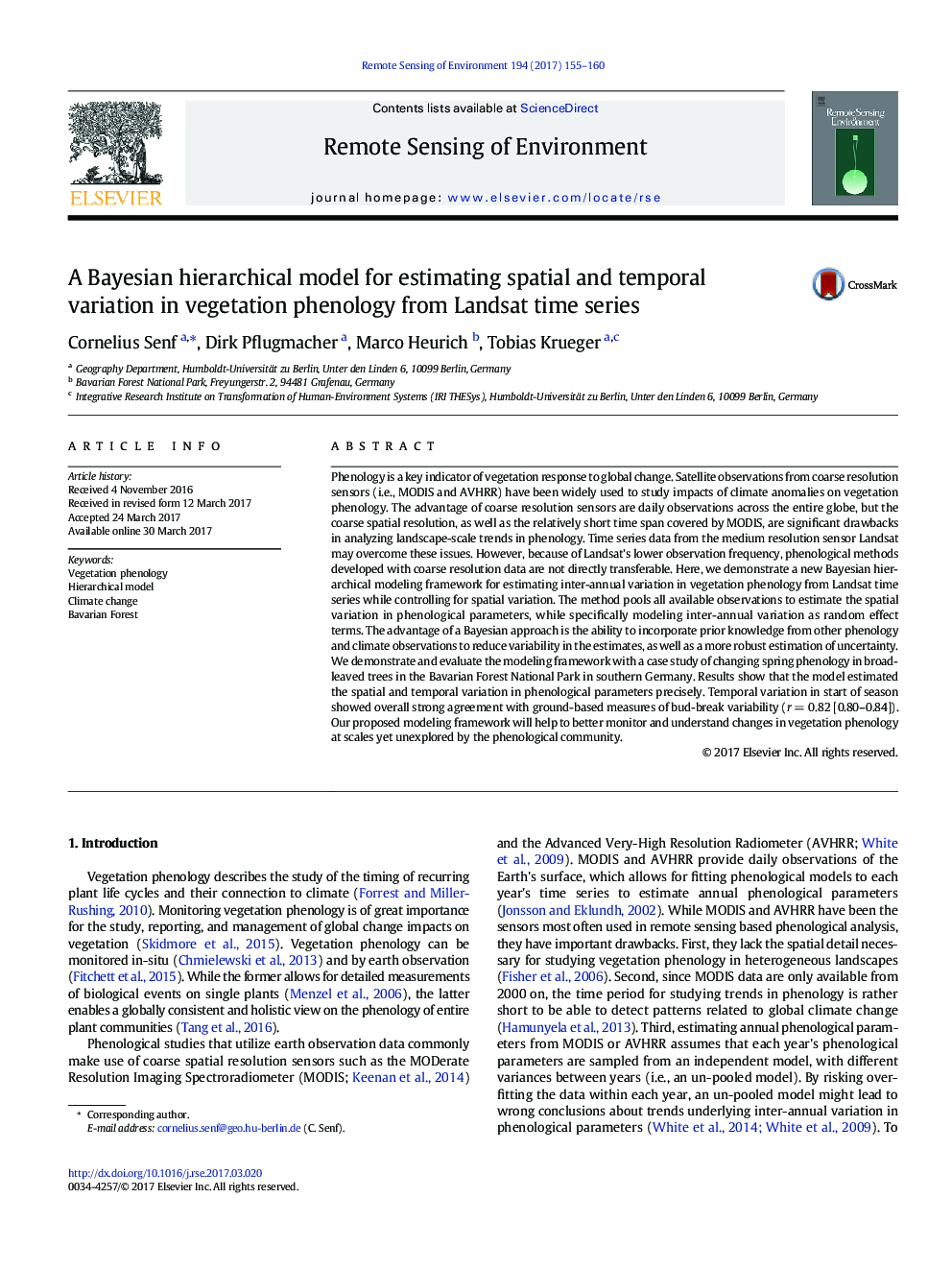| Article ID | Journal | Published Year | Pages | File Type |
|---|---|---|---|---|
| 5754998 | Remote Sensing of Environment | 2017 | 6 Pages |
â¢New model estimating spatiotemporal variation in vegetation phenology from Landsatâ¢Bayesian approach allows incorporating prior information and assessing uncertainty.â¢Estimates of annual season start closely resemble time series of bud-break.â¢Model allows for integrating auxiliary data for improved understanding of phenology.
Phenology is a key indicator of vegetation response to global change. Satellite observations from coarse resolution sensors (i.e., MODIS and AVHRR) have been widely used to study impacts of climate anomalies on vegetation phenology. The advantage of coarse resolution sensors are daily observations across the entire globe, but the coarse spatial resolution, as well as the relatively short time span covered by MODIS, are significant drawbacks in analyzing landscape-scale trends in phenology. Time series data from the medium resolution sensor Landsat may overcome these issues. However, because of Landsat's lower observation frequency, phenological methods developed with coarse resolution data are not directly transferable. Here, we demonstrate a new Bayesian hierarchical modeling framework for estimating inter-annual variation in vegetation phenology from Landsat time series while controlling for spatial variation. The method pools all available observations to estimate the spatial variation in phenological parameters, while specifically modeling inter-annual variation as random effect terms. The advantage of a Bayesian approach is the ability to incorporate prior knowledge from other phenology and climate observations to reduce variability in the estimates, as well as a more robust estimation of uncertainty. We demonstrate and evaluate the modeling framework with a case study of changing spring phenology in broad-leaved trees in the Bavarian Forest National Park in southern Germany. Results show that the model estimated the spatial and temporal variation in phenological parameters precisely. Temporal variation in start of season showed overall strong agreement with ground-based measures of bud-break variability (r = 0.82 [0.80-0.84]). Our proposed modeling framework will help to better monitor and understand changes in vegetation phenology at scales yet unexplored by the phenological community.
